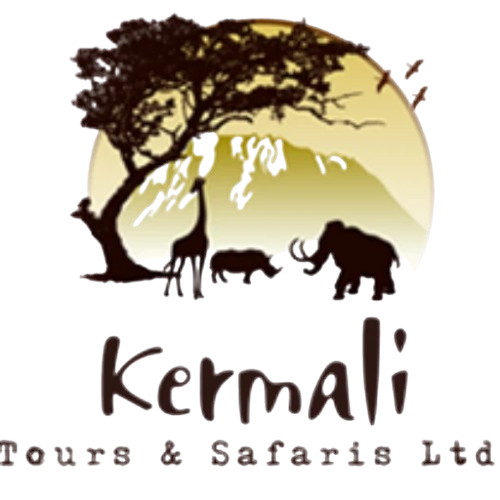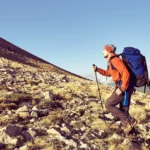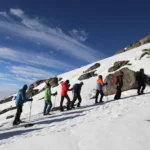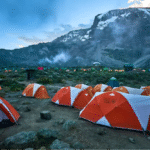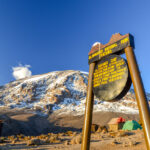Climbing to high altitudes, such as Mount Kilimanjaro, presents a unique challenge to your body due to reduced oxygen levels. To make your ascent as comfortable and safe as possible, Kermali Tours & Safaris Ltd offers you the knowledge and guidance to optimize your breathing techniques. Let’s explore the methods for enhancing your oxygen intake during high-altitude treks.

1. The Challenge of High Altitudes
As you ascend to high altitudes on Kilimanjaro, the air pressure decreases, leading to lower oxygen levels. This reduced oxygen saturation can cause symptoms like shortness of breath, dizziness, and fatigue. To mitigate these effects, mastering effective breathing techniques is essential.
2. Slow and Steady Breathing
Slow and steady breathing is key to oxygen efficiency at high altitudes. Breathe deeply and rhythmically, focusing on inhaling and exhaling at a consistent pace. This technique ensures your lungs receive an adequate supply of oxygen.
3. The Power of Diaphragmatic Breathing
Diaphragmatic breathing, or “belly breathing,” is a technique that engages your diaphragm more effectively than shallow chest breathing. To practice, inhale deeply, allowing your abdomen to expand, and then exhale fully. This method maximizes the exchange of oxygen and carbon dioxide.
4. Controlled Breathing Routines
Controlled breathing routines, such as the “4-7-8” method, can help regulate your breath and calm your body. Inhale for a count of 4, hold for 7, and exhale for 8. This pattern encourages deep, controlled breaths that improve oxygen uptake.
5. Acclimatization: Gradual Ascent
Proper acclimatization is critical when trekking at high altitudes. Slowly ascend to allow your body to adjust to the reduced oxygen levels. Take advantage of rest days at intermediate altitudes to facilitate acclimatization.
6. Stay Hydrated
Proper hydration supports oxygen transport in your body. Dehydration can reduce your blood’s oxygen-carrying capacity, so ensure you drink enough water throughout your trek.
7. Medication and Oxygen Supplements
In some cases, your guide may carry portable oxygen for emergencies. Certain medications, like acetazolamide (Diamox), can help alleviate symptoms of altitude sickness on Kilimanjaro. Consult with your guide or a healthcare professional if you’re concerned about altitude-related issues.

8. The Kermali Advantage
Kermali Tours & Safaris Ltd is dedicated to your safety and comfort during high-altitude treks. Our experienced local Kilimanjaro guides are trained to recognize the signs of altitude sickness and will provide guidance on breathing techniques and other measures to ensure your wellbeing.
9. Enhance Your Oxygen Intake
Are you ready to optimize your breathing techniques for a high-altitude adventure? With our guidance, you can improve oxygen intake, minimize altitude-related challenges, and enjoy a more comfortable ascent.
Conclusion: Breathe Deeply, Trek Comfortably
Contact us today, and let’s embark on your high-altitude trek with confidence. It’s time to breathe deeply, trek comfortably, and create unforgettable mountain memories.
